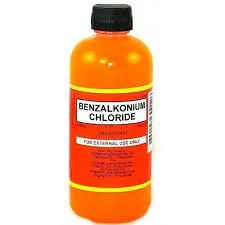Flocculation Chemicals for Effective Water Treatment Solutions and Purification Processes
Flocculation Chemicals in Water Treatment Enhancing Water Quality
Water treatment is a crucial process that ensures the safe and clean supply of water for various uses, including drinking, agriculture, and industrial applications. One of the key stages in water treatment is flocculation, which involves the aggregation of fine particles to form larger clusters, or flocs, that can be effectively removed from the water. This article explores the role of flocculation chemicals in water treatment, their types, mechanisms, and the importance of this process in improving water quality.
Understanding Flocculation
Flocculation occurs after the coagulation process, where coagulants are added to the water to neutralize particle charges. This step is significant because many contaminants, such as silt, clay, and microorganisms, carry a negative charge, preventing them from clumping together. Coagulants, such as aluminum sulfate (alum) and ferric chloride, are introduced to destabilize these particles by neutralizing their charges.
Once coagulation has taken place, flocculation follows. In this stage, flocculation chemicals—also known as flocculants—are added to promote the formation of larger, more easily removable aggregates. The flocculants facilitate the physical bonding of these particles, allowing them to settle out of solution during subsequent sedimentation processes.
Types of Flocculation Chemicals
Flocculation chemicals can be categorized mainly into organic and inorganic compounds, each type serving specific applications based on the characteristics of the water being treated.
1. Inorganic Flocculants - Commonly used inorganic flocculants include aluminum sulfate and ferric chloride. These substances work by providing cations that neutralize the negative charges of suspended particles, allowing them to cluster together.
2. Organic Flocculants - Organic flocculants, primarily polyacrylamides, are synthetic polymers that behave as high-molecular weight compounds, facilitating the aggregation of fine particles. They can be anionic, cationic, or non-ionic, depending on the desired charge characteristics for specific water types.
3. Natural Flocculants - Emerging interest in sustainability has renewed focus on natural flocculants like chitosan, derived from crustacean shells, and starch-based polymers. These eco-friendly alternatives are particularly appealing in settings where chemical exposure should be minimized.
water treatment flocculation chemicals

Mechanism of Action
Flocculation chemicals exert their effect through a process known as bridging. This occurs when the long chains of organic flocculants entwine fine particles, binding them into larger aggregates. As these aggregates grow, they become denser and sink to the bottom of the treatment basin, where they can be effectively removed through sedimentation or filtration.
The efficiency of flocculation is influenced by several factors, including pH, temperature, and the concentration of flocculants. Proper dosage is critical; too little may result in ineffective floc formation, while too much can lead to excessive sludge production, complicating the treatment process.
Importance of Flocculation in Water Treatment
The flocculation process is vital for several reasons. Firstly, it significantly enhances the removal of suspended solids, leading to clearer water. This is particularly important for sources affected by turbidity, which can harbor pathogens and impede disinfection processes.
Secondly, efficient flocculation can reduce the burden on subsequent filtration steps, resulting in lower operational costs and extended filter life. Treatments that effectively manage flocculation can lead to improved overall water quality, enabling compliance with strict regulatory standards.
Moreover, as water treatment facilities face increased challenges from pollutants—ranging from industrial runoff to emerging contaminants—the role of flocculation chemicals becomes even more prominent. Developing effective flocculation strategies is essential to address these challenges, ensuring that water remains safe for consumption and use.
Conclusion
Flocculation chemicals play an indispensable role in the water treatment process, enhancing the removal of particulate matter and contributing to the overall quality of treated water. As the demand for clean water continues to rise, understanding and optimizing flocculation will be critical for effective and sustainable water management practices. By leveraging both traditional and innovative flocculants, water treatment facilities can navigate the complexities of modern water quality challenges, ultimately protecting public health and supporting environmental sustainability.
-
Water Treatment with Flocculant Water TreatmentNewsJun.12,2025
-
Polymaleic AnhydrideNewsJun.12,2025
-
Polyaspartic AcidNewsJun.12,2025
-
Enhance Industrial Processes with IsothiazolinonesNewsJun.12,2025
-
Enhance Industrial Processes with PBTCA SolutionsNewsJun.12,2025
-
Dodecyldimethylbenzylammonium Chloride SolutionsNewsJun.12,2025





